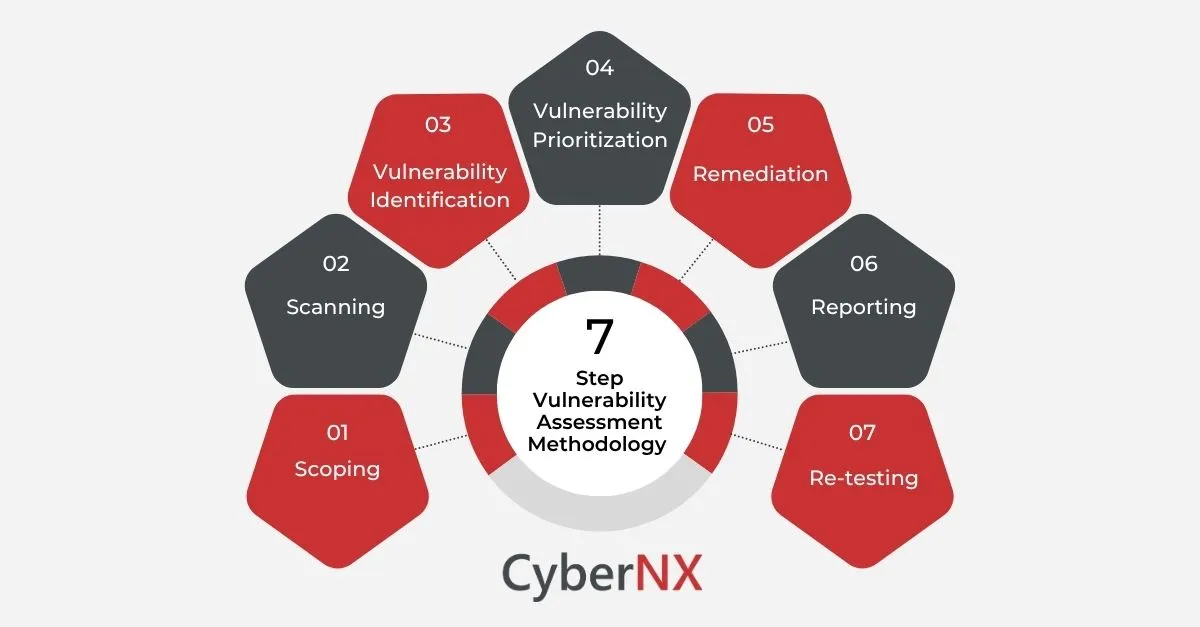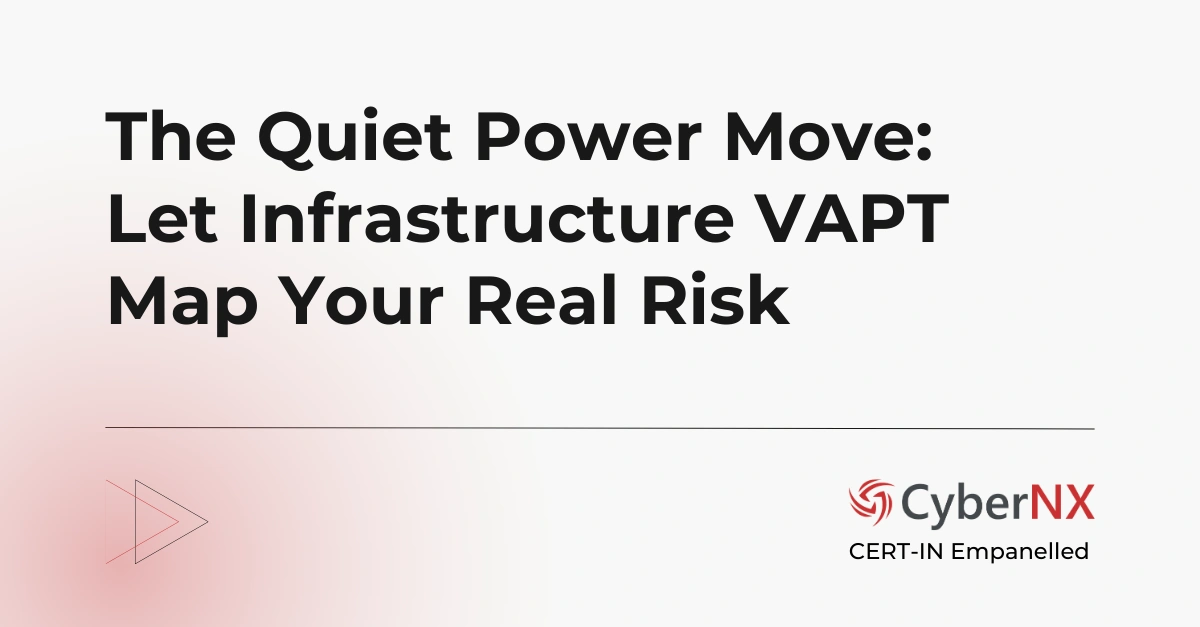Ever feel like no matter how many locks you put on your door, you’re still not quite sure if your house is safe? That’s exactly how businesses feel about their digital systems. Firewalls, antivirus, multi-factor authentication – they’re all there. Yet, one quiet, unnoticed weakness can bring everything crashing down. That’s where vulnerability assessment methodology comes in.
It’s not just another checklist. It’s a structured way of uncovering the cracks in your defences before someone else does. And if you’ve ever wondered how professionals go about this process, this guide is for you.
What is Vulnerability Assessment Methodology?
At its core, vulnerability assessment methodology is a step-by-step approach to identifying, analysing, prioritizing, and fixing weaknesses in your IT environment. Think of it as a health check-up for your systems. A doctor doesn’t just glance at you and say, “You’re fine.” They run tests, compare results, and prescribe treatment.
Same here. Except the “body” in question is your network, applications, servers, cloud environments, and sometimes even the employees who use them.
The goal? Spot risks early, understand how serious they are, and give you a clear path to fix them.
If you are trying to understand how this cybersecurity service works and how it can help your security objectives, read our expert-led and comprehensive blog Vulnerability Assessment Guide.
7 Step Vulnerability Assessment Methodology
Here’s the breakdown most experts follow (and tweak for their own environments):
1. Scoping
Before diving in, you need boundaries. What exactly should be tested? Is it just your customer-facing website? Or the entire internal network? This stage prevents wasted effort and ensures everyone – your team, your vendors, your IT folks – knows what’s on the table.
2. Scanning
This is where the tools come out. Automated scanners comb through systems like digital bloodhounds, sniffing for known weaknesses. Misconfigured firewalls, unpatched software, outdated protocols – they pop up here.
3. Vulnerability Identification
Scanning gives you raw data, but it’s noisy. At this stage, analysts sift through results to separate false positives from real threats. It’s a bit like gold panning – lots of dirt, but the nuggets are there.
4. Vulnerability Prioritization
Not every issue deserves the same attention. A critical bug that exposes sensitive data takes priority over a low-risk misconfiguration. This step assigns severity levels, so you know where to focus first.
5. Remediation
Here’s where the action happens. Patch systems. Update software. Reconfigure settings. In some cases, it’s not about technology – it might involve training staff or tightening policies.
6. Reporting
A proper report doesn’t drown you in technical jargon. It should tell a story: what was found, how serious it is, and what you can do next. Think of it less like a lab report and more like a roadmap.
7. Re-testing
Fixing vulnerabilities isn’t the end. You retest to make sure the fixes actually worked. Because sometimes patches fail, or a new update reintroduces the same weakness.
Top 5 Vulnerability Assessment Tools Preferred by Experts
Choosing tools isn’t easy. Some overwhelm you with data. Others lack depth. Based on expert opinion, we have discussed five tools professionals lean on. A quick side-by-side look at the top vulnerabilitfy assessment tools, highlighting where each one shines.
| TOOL | BEST FOR | STRENGTHS | DEPLOYMENT TYPE |
| Burp Suite | Web apps | Deep manual + automated testing | Desktop/Server |
| Nessus | Broad vulnerability scans | Large database, frequent updates | On-prem/Cloud |
| Qualys | Enterprises | Cloud-native, scalable | Cloud |
| OpenVAS | Flexible setups | Open-source, customizable | On-prem |
| Rapid7 InsightVM | Vulnerability mgmt. | Integration with remediation | On-prem/Cloud |
Vulnerability Assessment Best Practices
A strong vulnerability assessment methodology isn’t just about tools or steps. Often, it’s about discipline. Schedule assessments regularly, not just after a breach. Always validate results (false positives are sneaky). Involve both IT and business leaders in prioritization. And above all – treat this as an ongoing cycle, not a one-time task.
This is just a preview. For a broad understanding of the topic, read our blog Vulnerability Assessment Best Practices.
Conclusion
Following a structured vulnerability assessment methodology means you’ll find weaknesses before attackers do. This will help you focus on what truly matters and maintain trust across the business. In addition, vulnerability assessment is a sensitive program which should be performed by professionals only. To catch hidden vulnerabilities specific to your system, following the right methodology is therefore a must. Contact us today for vulnerability assessment services.
Vulnerability Assessment Methodology FAQs
How often should vulnerability assessments be performed?
Frequency depends on your business environment. For most organizations, quarterly assessments are a safe baseline because vulnerabilities emerge quickly with new patches, software, and configurations. In highly regulated sectors like finance, insurance, and healthcare, monthly assessments – or even continuous scanning – are common. Cloud-native companies often integrate vulnerability assessment methodology into CI/CD pipelines so that checks happen automatically with every new release.
Is vulnerability assessment the same as penetration testing?
Not quite. Vulnerability assessments focus on breadth – finding as many potential weaknesses as possible across your systems. Penetration testing, on the other hand, goes deeper. Testers attempt to actively exploit vulnerabilities to demonstrate real-world risks. Think of it this way: vulnerability assessment is like a health check-up, while penetration testing is a stress test where doctors push the body to its limits to see how it responds. Both are important, but they serve different purposes in your cybersecurity strategy.
Can small businesses benefit from vulnerability assessments?
Yes, and arguably even more than large enterprises. Smaller businesses often lack robust in-house security teams, which makes them attractive targets. A well-structured vulnerability assessment methodology helps SMBs spot weak configurations, outdated software, and risky practices before attackers exploit them. Many cloud-based tools now offer affordable subscription models, lowering the barrier for small organizations to adopt best practices.
What’s the biggest mistake in vulnerability assessments?
The biggest pitfall is stopping at identification. Many companies run a scan, generate a long list of issues, and then let the report gather dust. Without prioritization, remediation, and re-testing, the process loses its value. Another common mistake? Over-reliance on tools. Automated scanners are great, but they still produce false positives and miss context. Human judgment – especially from IT leaders who understand business impact – is essential for turning results into actionable improvements.






